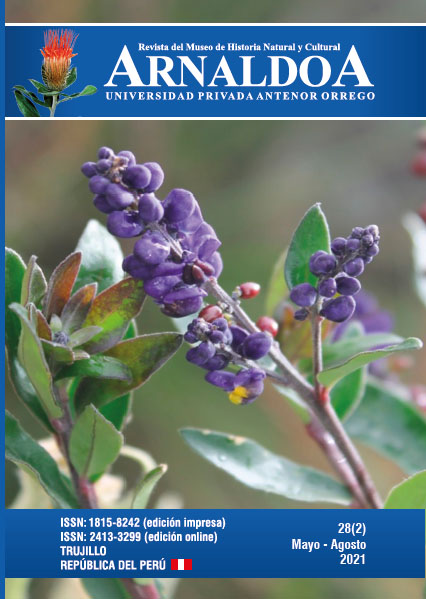Coinoculation of Rhizophagus irregularis and Trichoderma viride in Carica papaya (Caricaceae) under greenhouse conditions
DOI:
https://doi.org/10.22497/1597Keywords:
Rhizophagus irregularis, Trichoderma viride, mycorrhiza, Carica papayaAbstract
Beneficial microorganisms tend to promote growth and development of Carica papaya at different levels. The objective of this study was to evaluate the effect of Rhizophagus irregularis and Trichoderma viride on C. papaya (Caricaceae) growth under greenhouse conditions for 28 days. C. papaya plantlets obtained through micropropagation were used after acclimation. Each plantlet received a treatment with 500 R. irregularis spores and/or 5x107 T. viride spores randomly. The plants were cultured under greenhouse conditions and watered with an 15-15-15 NPK solution for 28 days. The results demonstrate that the treatments with R. irregularis and the coinoculation with R. irregularis and T. viride promoted the vegetative growth of papaya plants by increasing shoot length, shoot diameter, number of leaves and leaf area. Treatment with T. viride did not induce significant changes. It is concluded that the use of beneficial microorganisms such as R. irregularis and T. viride increases the growth parameters of C. papaya in the first days of culture under greenhouse conditions.Downloads
Downloads
Published
2021-11-25
Issue
Section
Artículos originales
License
By submitting a paper to the journal, it is understood that the authors agree to transfer the publication rights to the journal once it is accepted.
It is permitted to share and adapt the contents of this journal in any medium or format always if the original source is properly cited and there are not commercial purposes.







